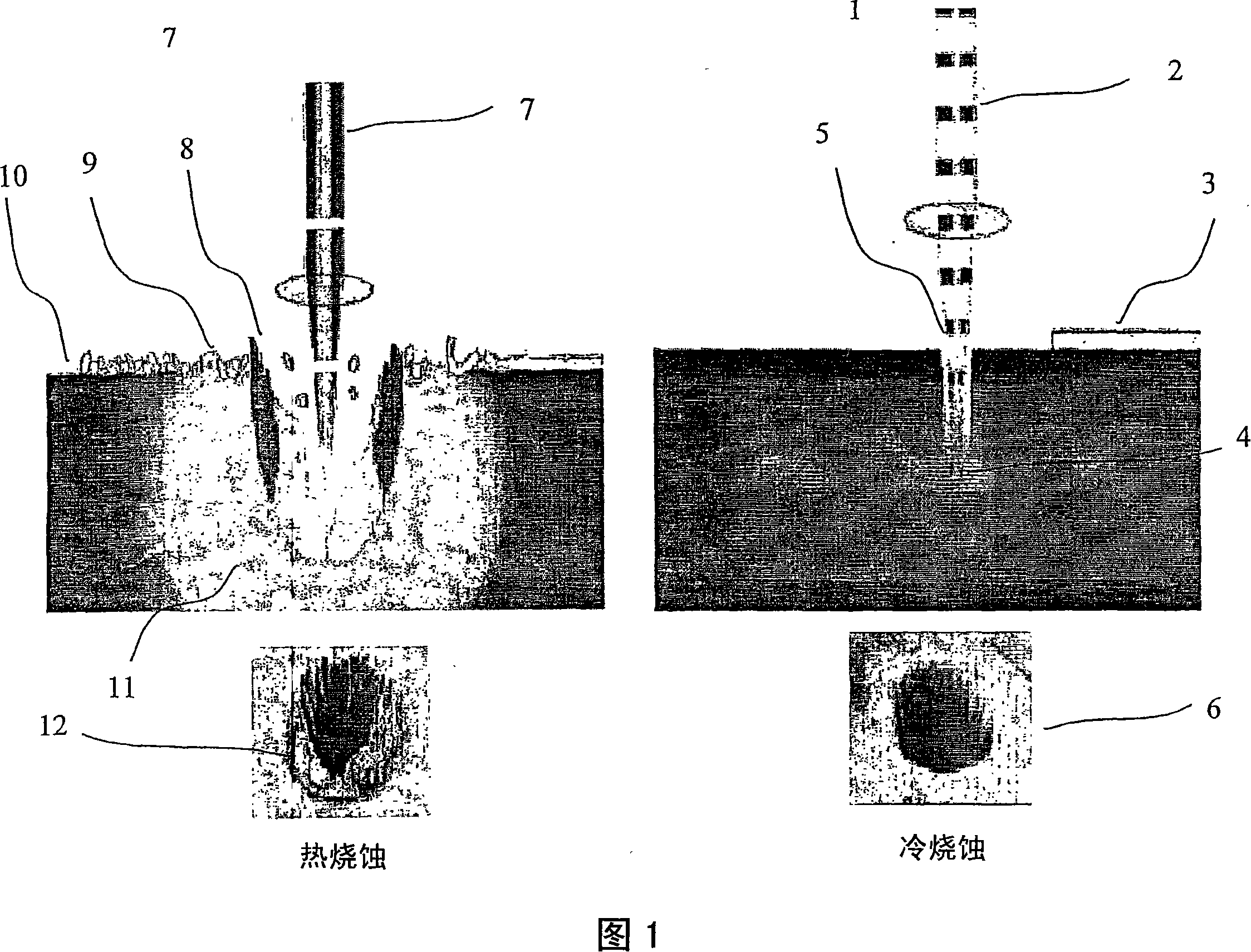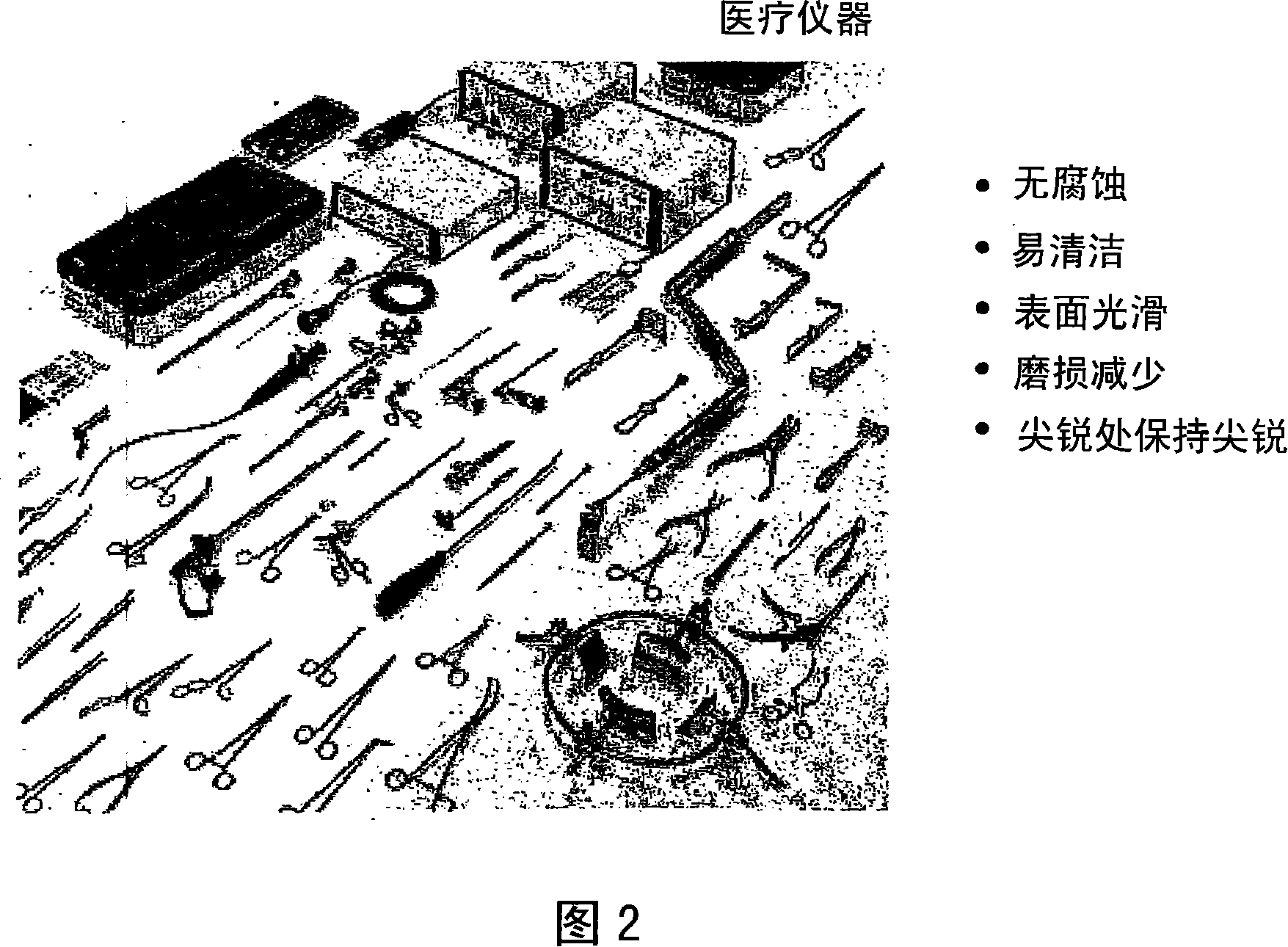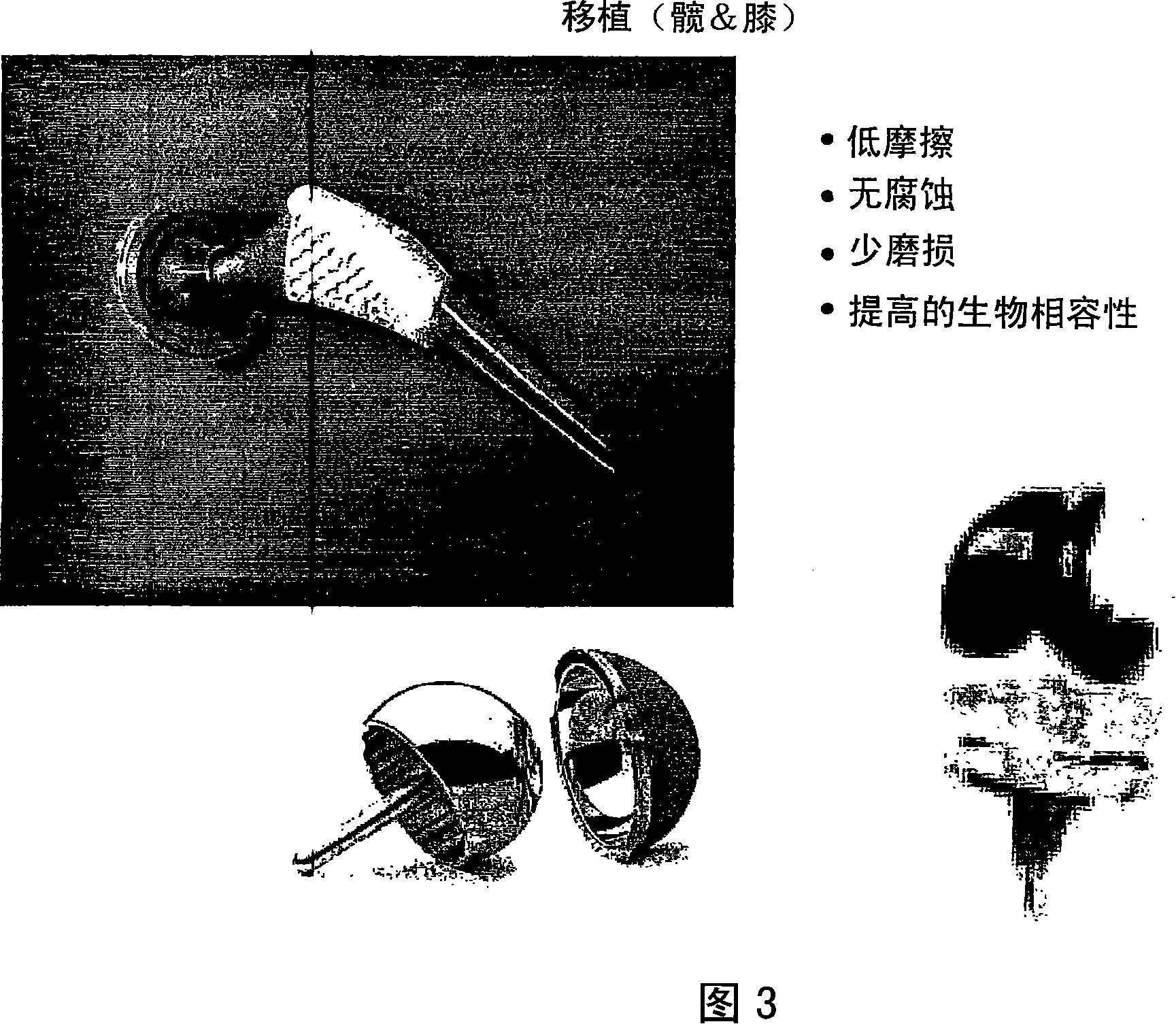Pulse laser sediment method
A laser, laser ablation technology, used in optics, optical components, coatings, etc., can solve problems such as low operating speed and low operating speed
- Summary
- Abstract
- Description
- Claims
- Application Information
AI Technical Summary
Problems solved by technology
Method used
Image
Examples
example
[0039] The methods and products of the invention are described below without limiting the invention to the examples given. The coating was produced using two X-lase 10W picosecond lasers manufactured by the company Corelase Oy and an X-lase 10W picosecond laser manufactured by the company Corelase Oy. Pulse energy refers to pulse energy incident on an area of 1 square centimeter, which is focused on an area of desired size using optics.
example 1
[0041] In this example, a polycarbonate plate was coated with a diamond coating (sintered carbon). The laser device has the following performance parameters:
[0042] Power: 10W
[0043] Repetition frequency: 4MHz
[0044] Pulse energy: 2.5μJ
[0045] Pulse period: 20ps
[0046] Distance between target and substrate: 35mm
[0047] Vacuum level: 10 -7
[0048] The polycarbonate plate was thus coated with a DLC coating with a thickness of about 200 nm.
example 2
[0050] In this example, bone screws made of roster are covered with a titanium coating. The laser device has the following performance parameters and the coating is produced from ablation sintered carbon:
[0051] Power: 10W
[0052] Repetition frequency: 4MHz
[0053] Pulse energy: 2.5μJ
[0054] Pulse period: 20ps
[0055] Distance between target and substrate: 37mm
[0056] Vacuum level: 10 -8
[0057] The diamond coating (DLC) thus produced has a thickness of about 100 nm.
PUM
| Property | Measurement | Unit |
|---|---|---|
| Pulse energy | aaaaa | aaaaa |
| Thickness | aaaaa | aaaaa |
| Thickness | aaaaa | aaaaa |
Abstract
Description
Claims
Application Information
 Login to View More
Login to View More - R&D
- Intellectual Property
- Life Sciences
- Materials
- Tech Scout
- Unparalleled Data Quality
- Higher Quality Content
- 60% Fewer Hallucinations
Browse by: Latest US Patents, China's latest patents, Technical Efficacy Thesaurus, Application Domain, Technology Topic, Popular Technical Reports.
© 2025 PatSnap. All rights reserved.Legal|Privacy policy|Modern Slavery Act Transparency Statement|Sitemap|About US| Contact US: help@patsnap.com



